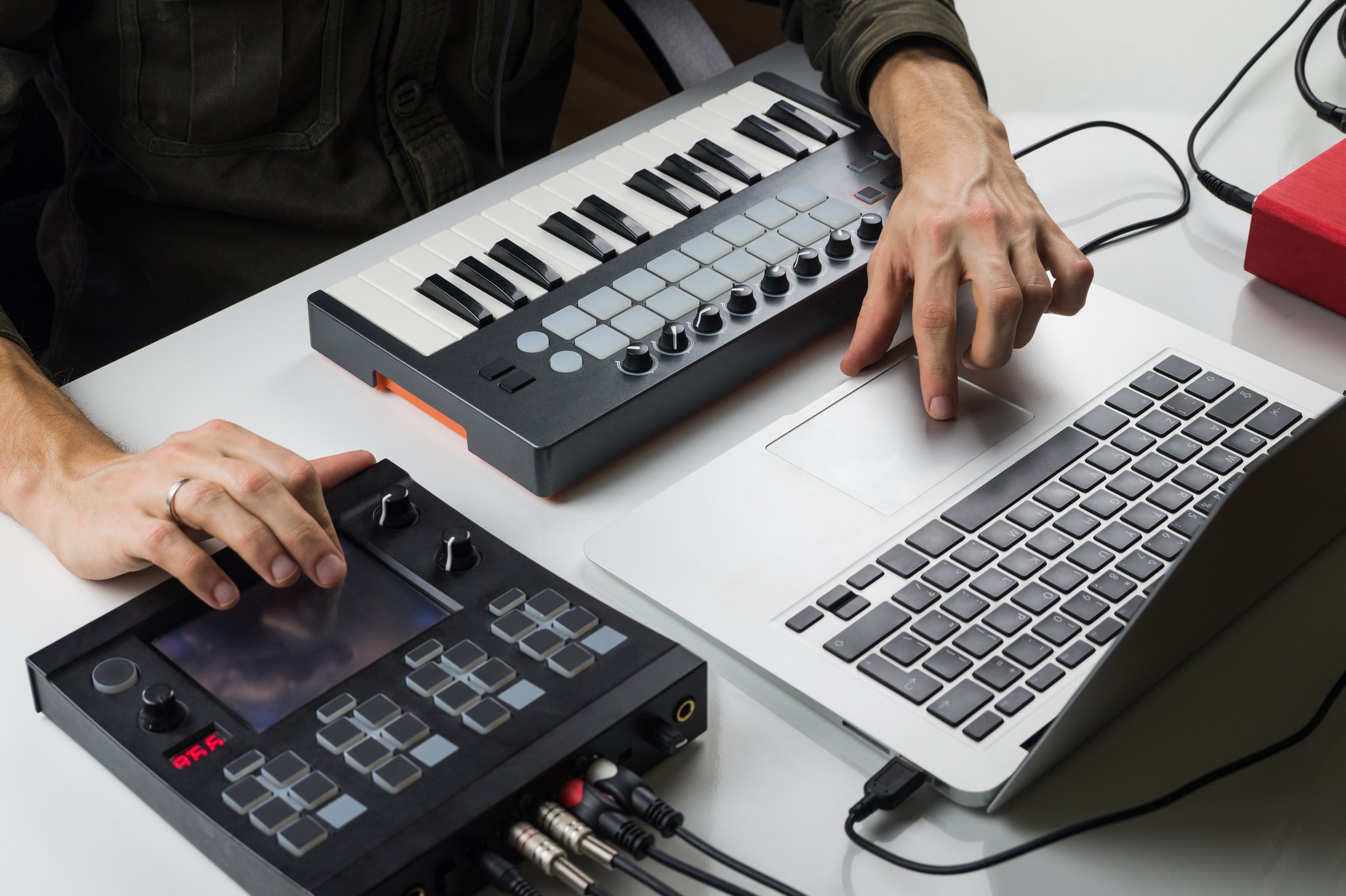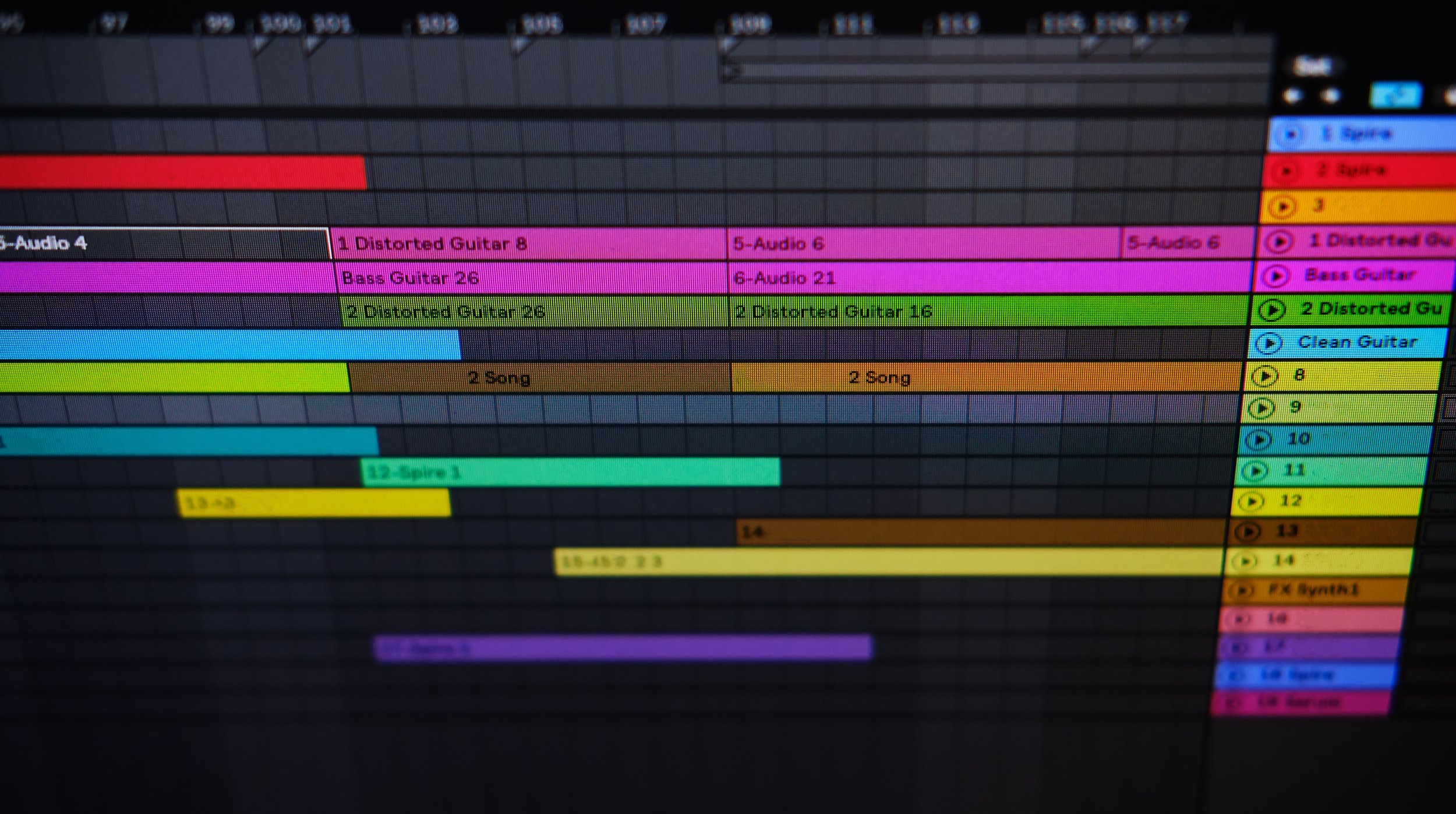Music Production Lessons
Learn to make music with Soundtrap or Ableton Live
What’s the difference? Click here to read more.
Learn music production with Soundtrap
A fantastic introduction to DAWs (Digital Audio Workstations)
Path Overview:
This path is designed to provide students with a comprehensive understanding of Soundtrap, a user-friendly online music production platform, and guide them through the process of creating a complete song from start to finish. By the end of the journey, students will have gained the skills necessary to produce their own music using Soundtrap and will have a solid foundation in music production techniques.
Prerequisites:
Basic computer literacy
Familiarity with basic music theory (recommended, but not required)
Access to a computer with an internet connection
Learning Objectives:
Familiarize students with the Soundtrap interface and its various features.
Introduce fundamental music production concepts, including MIDI, audio recording, and effects processing.
Develop students' skills in organizing and manipulating audio clips and MIDI patterns.
Guide students through the process of creating drum patterns and rhythmic elements.
Teach students techniques for composing melodies, harmonies, and basslines.
Explore sound design principles and synthesis techniques using Soundtrap's virtual instruments and effects.
Provide an overview of mixing techniques, including EQ, compression, and spatial effects.
Teach students how to arrange their tracks effectively and create dynamic song structures.
Introduce audio editing and manipulation techniques to enhance the overall production quality.
Cover the basics of mastering and preparing a song for release.
Soundtrap Path Outline:
Phase 1: Introduction to Soundtrap
Overview of the Soundtrap interface
Creating and managing projects
Navigating the loop library and sound library
Basic settings and preferences
Phase 2: Recording and Editing
Recording audio and MIDI in Soundtrap
Editing and quantizing MIDI notes
Basic audio editing techniques
Working with loops and samples
Phase 3: Drum Programming
Using the built-in drum machine in Soundtrap
Programming and sequencing drum patterns
Exploring drum sound design and processing
Incorporating drum loops and samples
Phase 4: Composing Melodies and Harmonies
Music theory essentials for composition
Creating melodies using virtual instruments
Building chord progressions and harmonies
Layering and arranging melodic elements
Phase 5: Basslines and Low-End
Designing and programming bass sounds
Techniques for creating catchy basslines
Incorporating sub-bass and low-end processing
Balancing bass with other elements in the mix
Phase 6: Sound Design and Synthesis
Introduction to Soundtrap's virtual instruments
Synthesis techniques for creating unique sounds
Applying modulation and effects to shape sounds
Sound design exercises and experimentation
Phase 7: Mixing Techniques
Understanding the mixing process
Equalization (EQ) and frequency balancing
Dynamics processing (compression, limiting, etc.)
Creating depth and space with reverb and delay
Phase 8: Arrangement and Song Structure
Planning and developing an arrangement
Using automation to add movement and variation
Creating transitions and building tension
Arrangement techniques for different genres
Phase 9: Audio Manipulation and Sampling
Advanced audio editing techniques
Creative sampling and manipulation
Time-stretching and pitch-shifting
Incorporating vocals and vocal processing
Phase 10: Mastering and Finalizing
Introduction to mastering concepts
Applying mastering plugins and processing
Preparing a song for distribution and release
Reviewing the final mix and making adjustments
Continuing beyond the final steps:
Students are challenged to apply their knowledge and use it to begin composing at different tempos, in different keys, and with different styles and references in mind. Tackling different genres of music can take time, but with proper guidance, anyone can master the art of making music in any style, whether for personal or commercial value.
Learn Ableton Live
A professional DAW with limitless flexibility
Path Overview:
This path is designed to provide students with a comprehensive understanding of Ableton Live, a powerful digital audio workstation (DAW), and guide them through the process of creating a complete song from start to finish. By the end of the course, students will have gained the skills necessary to produce their own music using Ableton Live and will have a solid foundation in music production techniques.
Prerequisites:
Basic computer literacy
Familiarity with music theory (recommended, but not required)
Access to a computer with Ableton Live installed (version 10 or above)
Learning Objectives:
Familiarize students with the Ableton Live interface and its various features.
Introduce fundamental music production concepts, including MIDI, audio recording, and effects processing.
Develop students' skills in organizing and manipulating audio clips and MIDI patterns.
Guide students through the process of creating drum patterns and rhythmic elements.
Teach students techniques for composing melodies, harmonies, and basslines.
Explore sound design principles and synthesis techniques using Ableton's instruments and effects.
Provide an overview of mixing techniques, including EQ, compression, and spatial effects.
Teach students how to arrange their tracks effectively and create dynamic song structures.
Introduce audio editing and manipulation techniques to enhance the overall production quality.
Cover the basics of automation and how it can be used to add movement and interest to a track.
Discuss strategies for finalizing a song, including mastering and preparing it for release.
Path Outline:
Phase 1: Introduction to Ableton Live
Overview of the Ableton Live interface
Understanding session and arrangement views
Navigating the browser and managing files
Setting up audio and MIDI preferences
Phase 2: Recording and Editing
Recording audio and MIDI into Live
Editing and quantizing MIDI notes
Basic audio editing techniques
Working with loops and samples
Phase 3: Building Drum Patterns
Introduction to drum racks and MIDI sequencing
Creating and programming drum patterns
Exploring drum sound design and processing
Using Ableton's built-in drum kits and samples
Phase 4: Composing Melodies and Harmonies
Music theory essentials for composition
Creating melodies using MIDI instruments
Building chord progressions and harmonies
Layering and arranging melodic elements
Phase 5: Basslines and Low-End
Designing and programming bass sounds
Techniques for creating catchy basslines
Incorporating sub-bass and low-end processing
Balancing bass with other elements in the mix
Phase 6: Sound Design and Synthesis
Introduction to Ableton's instruments
Synthesis techniques for creating unique sounds
Applying modulation and effects to shape sounds
Sound design exercises and experimentation
Phase 7: Mixing Techniques
Understanding the mixing process
Equalization (EQ) and frequency balancing
Dynamics processing (compression, limiting, etc.)
Creating depth and space with reverb and delay
Phase 8: Arrangement and Song Structure
Planning and developing an arrangement
Using automation to add movement and variation
Creating transitions and building tension
Arrangement techniques for different genres
Phase 9: Audio Manipulation and Sampling
Advanced audio editing techniques
Creative sampling and manipulation
Time-stretching and pitch-shifting
Incorporating vocals and vocal processing
Phase 10: Finalizing and Mastering
Introduction to mastering concepts
Applying mastering plugins and processing
Preparing a track
Continuing beyond the final steps:
Students are challenged to apply their knowledge and use it to begin composing at different tempos, in different keys, and with different styles and references in mind. Tackling different genres of music can take time, but with proper guidance, anyone can master the art of making music in any style, whether for personal or commercial value.


